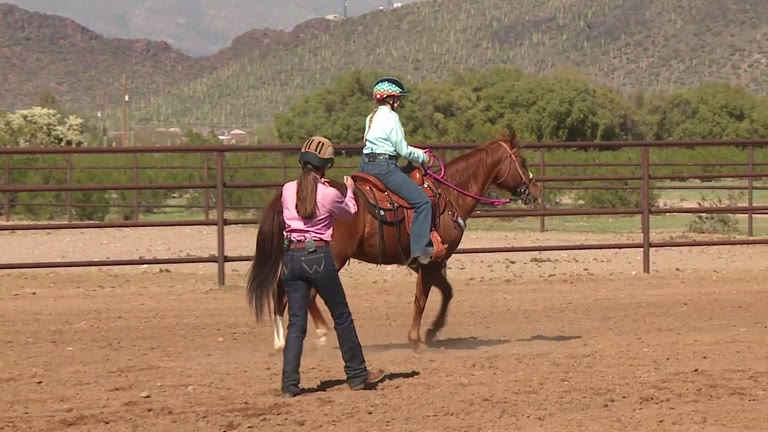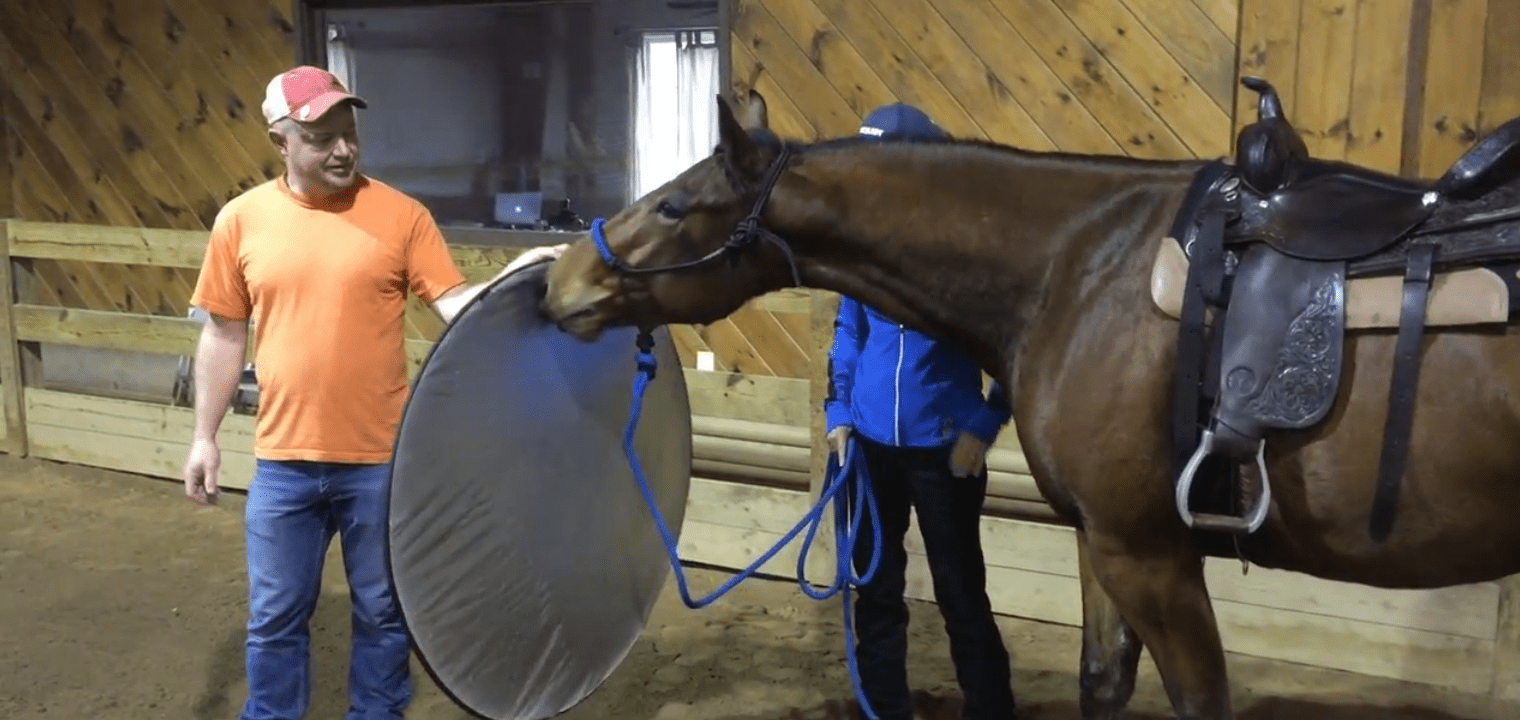Question Category: Issues from the Saddle
Question: My riding instructor and I have a question regarding using one rein while riding. I’ve seen it mentioned in several different articles and books. John Lyons discusses using one rein when starting a young horse. My instructor learned the technique from Karen O’Connor. When we use it on any of our horses – lesson horses to upper level eventers, it seems to calm them and refocus their attention. Can you help explain the equine thought process here and why it seems to be so effective? Also, in what situations would you recommend using it and why?
Thanks,
Sarah
Answer: Any horse will work better when the reins are used one at a time as opposed to using both reins at the same time. There are several reasons for this. First, when you pull on both reins at the same time, it causes a horse to clench his jaw, stiffen his neck and lean into the pressure. He ends up with a stiff and bracey neck that feels like it has two pieces of rod iron in it.
Secondly, using both reins at once puts you and your horse in a tug-of-war that he will always win because he out weighs you by so much.
We want our horses to stay soft in the jaw and loose in the neck (and body) and that will only happen when you use one rein at a time. The mechanics of the bit are such that when you pull on both reins at the same time, it creates pressure all over his mouth, tongue, jaw and palate; it is too much pressure and the horse’s only concern will be to get away from the pressure however he can– he quits thinking, which is not conducive to learning. You also lose any ability to be articulate with the rein aids or use the reins to influence certain parts of his body, because the pressure is everywhere and he cannot adjust to subtle rein cues.
Even in a hackamore, rope halter, side-pull, etc., you’ll get the same response if you pull on both reins at the same time. Horses tend to move into static pressure; try leaning on your horse and notice he shifts his weight and starts leaning back. Pulling with two reins simply gives the horse something to brace against and lean on. He cannot do that with one rein.
You’ll have much more control over the horse when his neck is slightly bent than when it is straight. It is when the horse stiffens his neck straight in front of him that we lose control. Using one rein to stop or using both reins alternately, like you do for collection is the ideal. Even when using both reins, you always want to keep a rhythm in the reins so that you are not giving the horse something to lean on.
There is a well-documented behavior that I think helps explain why horses are more responsive to one rein than two. When a horse eats or drinks (from the ground) he is very vulnerable because his vision is so poor at that point that he can only see the ground immediately around him. Therefore, when a horse eats or drinks (in the wild) he will eat a few bites, slowly lift his head, swing it to one side, go back down for another few bites, lift his head, slowly swing it to the other side. This is believed to be an instinctive behavior of horses that helps keep them safe from predators when their head would other wise be down in that vulnerable position. Therefore, it follows that if we can move a horse’s nose gently from side to side and keep his neck loose and relaxed, he stays soft and calm.
When a person pulls relentlessly on both reins in an attempt to bring the horse into control or to get him to come on the bit (something I see in every clinic that I do) it tends to lead to the horse getting more and more out of control and agitated until he begins to “run through the bridle” in an attempt to escape the confusing, painful and relentless pressure on his mouth. The more you pull back, the faster the horse goes (moving into pressure). It is hard for people to understand that they need to release the pressure before they can get the horse to stop or to be responsive at all. Check (with weight and reins) then release, then check, then release.
Using the one-rein stop, you’ll never have this problem, even if your release is not as good as it should be. By and large, the biggest problem that people have riding is not releasing the horse from bit pressure enough.
Finally, using the one rein stop will lead to a disengagement of the hindquarters (occurs when the horse crosses his hind legs) which will always cause the horse to calm down, focus on you and become more submissive.
To execute the one-rein stop, lift up on one rein toward your belly button or opposite shoulder, it causes the horse to disengage as he stops. As soon as you feel the horse’s back bend as his hip comes under you (it is a very distinctive feel) you release the rein entirely. With practice, a slight lift of one rein will cause the horse to stop easily. Use the disengagement any time you lose a horse’s attention or anytime he becomes nervous or fractious. We use the one rein stop on young horses or any horses that are very forward and/or resistant to pressure from the reins. It is really a general practice that you can use on any horse at any time.
Julie Goodnight
Copyright ©Julie Goodnight 2000. All Rights Reserved. No part of this website may be reproduced without owner’s express consent.



